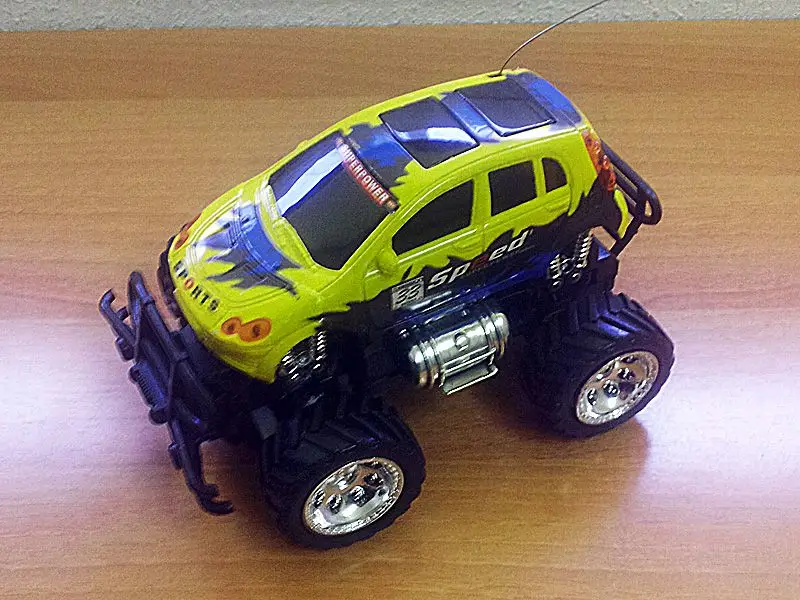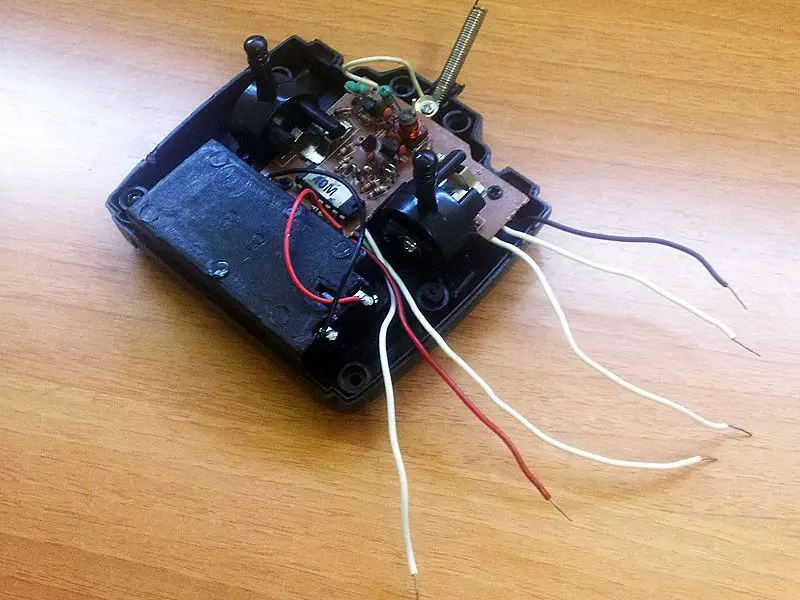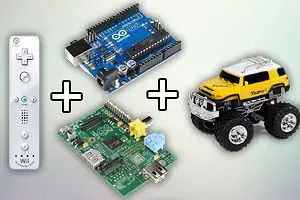Now that Christmas and Three Kings Day are approaching, with toy stores full of affordable toys and many gifts on the way, it seems like a good time to dust off an old project that, despite being several years old, is still quite interesting today. This was one of my first attempts to make a more or less robotic platform at an extremely reduced cost.
The project consisted of operating a remote control car using a Wii remote connected to a Linux computer, which in turn communicates with an Arduino board through a serial port. I also wanted to operate it from the computer, performing a preprogrammed trajectory, or even through a website or mobile phone. Quite a lot! And at the same time, something much easier and much cheaper than it seems at first.
So, coinciding with Three Kings Day and because I had behaved very well, I took the opportunity to ask the Three Kings for a small remote control car, making it clear that it should be very cheap because it was going to be the victim of my eagerness to experiment (and therefore be dismantled and quartered). I present to you the little car in question.  In order to minimize costs, the remote control of the remote control car would be carried out using its own remote control instead of modifying the vehicle’s electronics. An Arduino board and some transistors connected to the control simulate the action of a human operator. In this way, we avoid modifying the motor wiring, the need for H-bridges or protection diodes, or having to incorporate a new wireless transmission.
In order to minimize costs, the remote control of the remote control car would be carried out using its own remote control instead of modifying the vehicle’s electronics. An Arduino board and some transistors connected to the control simulate the action of a human operator. In this way, we avoid modifying the motor wiring, the need for H-bridges or protection diodes, or having to incorporate a new wireless transmission.  Unfortunately, perhaps I should have specified better to the Three Kings the “cheapness” range. The car they gave me had an all-or-nothing control for both acceleration and steering. This, together with the fact that it lacked sensors on the vehicle, made it almost impossible to follow a preprogrammed trajectory. Although by implementing PWM the handling and control regarding the original controls were substantially improved, a human operator was still necessary. Therefore, the vehicle never became truly autonomous.
Unfortunately, perhaps I should have specified better to the Three Kings the “cheapness” range. The car they gave me had an all-or-nothing control for both acceleration and steering. This, together with the fact that it lacked sensors on the vehicle, made it almost impossible to follow a preprogrammed trajectory. Although by implementing PWM the handling and control regarding the original controls were substantially improved, a human operator was still necessary. Therefore, the vehicle never became truly autonomous.
However, do not be deceived by its simplicity. The power of the motor, the size and type of wheels, and the general design of this toy made it a little beast. A real monster that runs over legs and chases cats, and playing with it is extremely fun, especially when controlling it through the accelerometers of the Wii remote, whose handling was surprisingly smooth.
We will not go into more specific details of the assembly or programming. On the one hand, because it is really simple, and on the other hand because it depends entirely on the remote control used. Also, we will learn to do these things and much more complicated ones in our Arduino section (including, of course, truly autonomous vehicles and robots at low cost). The purpose of this post, the really important thing, is as follows:
- We can combine devices and technologies in our projects: You don’t have to do a project only with Arduino, or only with Raspberry, or with Kinect, etc… They can be combined, and it is precisely these projects that are the most useful and interesting. The only limit is the imagination.
- When controlling a system, sometimes it is better to act on an existing controller, emulating a user. This is something that may happen to you in the professional world (it has happened to me in the case of thermal installations, pumping equipment, etc). If a machine has a controller that works correctly, many times it is better to leave it as a subsystem and have your control system emulate a human operator at a higher level of integration.
- Christmas is a unique opportunity to find original and affordable toys. Cars, excavators, helicopters, airplanes, arms, cranes… they are excellent mobile platforms for robots. Take a walk through the toy stores!
- It is worth looking at all components from the “electronic vulture” perspective. A toy can be a robotic platform, a broken printer a source of stepper motors, a 50-cent drain a good nozzle for the impeller of a quadcopter… Get used to dissecting and taking advantage of everything you see.
- No large investments of money are necessary to make your robotics projects. With a project like this, you can enjoy two or three weekends of geeky fun for next to nothing (which in the end, is what all this is about).
So, you know, take the opportunity to fill your letters to the Three Kings with toys and various electronic components to start a new year full of interesting projects. Merry Christmas to all!
